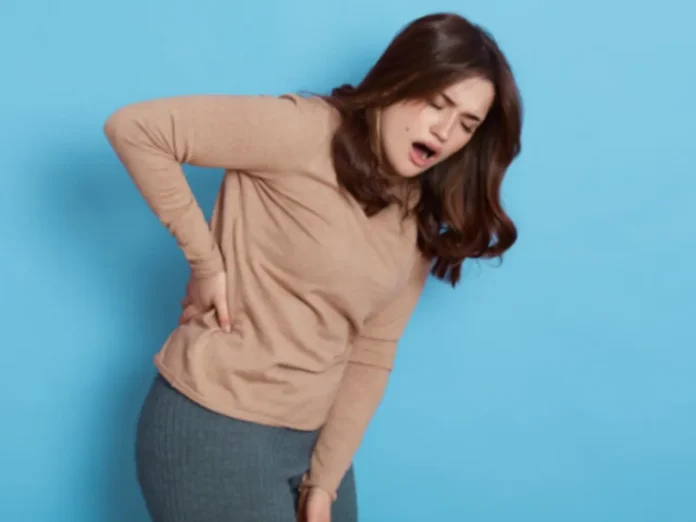Periods, also known as menstruation, is a natural process in a woman’s reproductive system in which the lining of the uterus sheds, resulting in vaginal bleeding. Many women experience various symptoms and discomfort during their menstrual cycle, and one common complaint is period-related back pain. This back pain can manifest in different ways and have various causes:
- Muscle Cramps: Menstrual cramps or dysmenorrhea are a common cause of back pain during periods. When the uterine muscles contract to help shed the uterine lining, they can cause pain in the lower abdomen, which sometimes radiates to the lower back.
- Hormonal Changes: Hormonal fluctuations during the menstrual cycle can lead to changes in the uterine muscle tone and increased sensitivity to pain, which can contribute to back pain.
- Prostaglandins: The body releases chemicals called prostaglandins during menstruation to help the uterine muscles contract. High levels of prostaglandins can lead to more intense contractions and, subsequently, more pain. These chemicals can also affect other muscles, including those in the back.
- Endometriosis: This is a condition in which the tissue similar to the lining of the uterus grows outside the uterus. It can cause severe menstrual cramps and lower back pain in addition to other symptoms.
- Fibroids: Uterine fibroids are non-cancerous growths in the uterus. Depending on their size and location, they can cause back pain and discomfort during menstruation.
- Adenomyosis: This condition involves the tissue that usually lines the uterus growing into the muscular wall of the uterus. It can cause heavy periods and associated back pain.
- Pelvic Inflammatory Disease (PID): Infections in the reproductive organs, such as PID, can lead to back pain during menstruation.
- Ovarian Cysts: Sometimes, cysts on the ovaries can rupture or cause pain during menstruation, including lower back pain.
- Back Muscle Strain: In some cases, women may unconsciously tense their back muscles during menstruation due to discomfort, leading to muscle strain and back pain.
- Position of the Uterus: The position of the uterus can vary from woman to woman. In some cases, a retroverted (tilted backward) or retroflexed (bent backward) uterus can contribute to back pain during periods.
Management of period-related back pain may include over-the-counter pain relievers (such as ibuprofen), lifestyle changes (e.g., exercise, heat therapy), hormone therapy, and, in severe cases or if an underlying condition is suspected, medical treatment or surgery. It’s essential to consult with a healthcare provider if the back pain during your period is severe, persistent, or accompanied by other concerning symptoms. They can help identify the cause and recommend appropriate treatment options.



